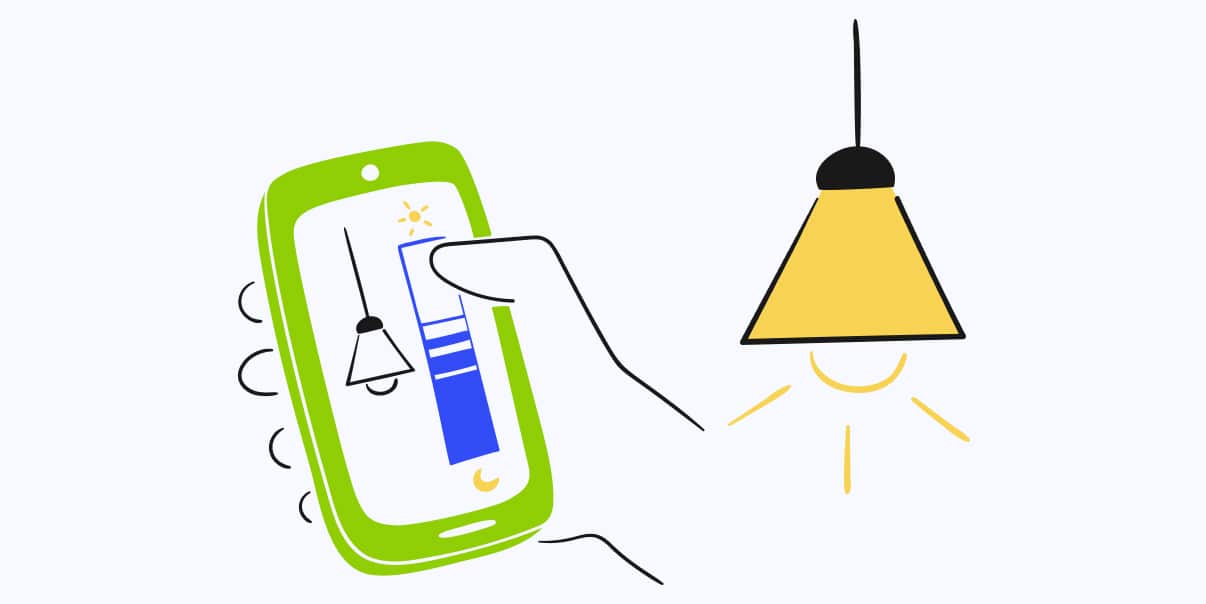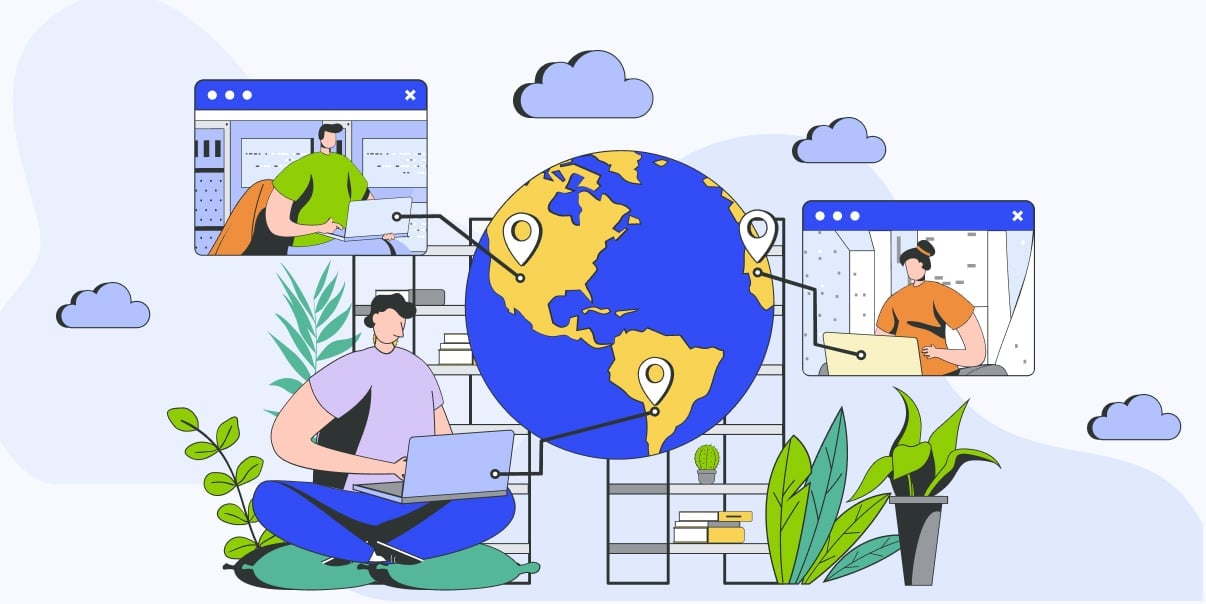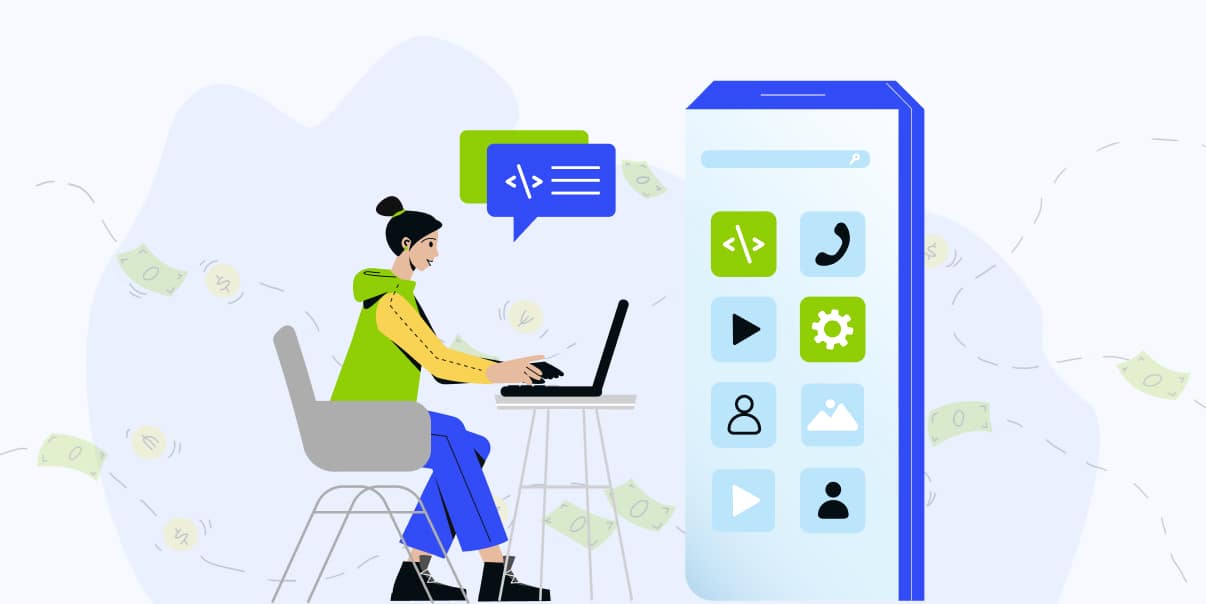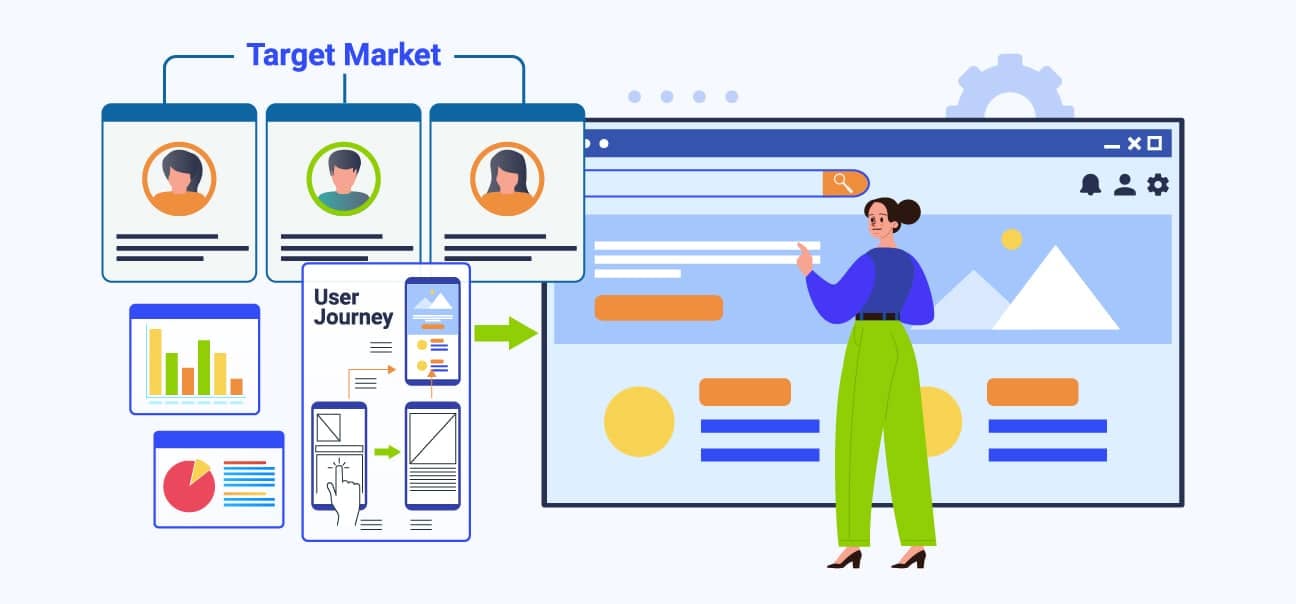What Is The Internet Of Things? All You Need To Know About IoT

The Internet of Things (IoT) is trending in the global market, catalyzing digital transformation. It is an innovative technology that connects physical devices, such as sensors and appliances, to the internet. By 2025, experts expect more than 75.44 billion connected IoT devices worldwide.
IoT has revolutionized many industries by providing real-time access to data for better decision-making. But what is the Internet of Things? How does it work in our everyday lives?
Let’s dive into how IoT works and what developments are on the horizon.
What Is the Internet of Things (IoT)?
The Internet of Things is a string of connected physical devices that collect and exchange data. This data controls various operations, such as monitoring and automated decision-making. Through these connections, users can access each device remotely.
Companies embed IoT devices with tiny sensors, computers, or other technologies. These things allow IoT to sense their environment and communicate with other devices. Depending on the specific application, they can act independently or as part of a more extensive system.
IoT is not limited to any particular industry, and almost all sectors are now using this innovation. These industries include healthcare, manufacturing, energy, transportation, retail, and many more.
Examples of IoT
You can find examples of IoT everywhere. Most of us are already using it in our homes, offices, and businesses without even realizing it.
But the most common use of IoT is in home automation. These are connected dwellings that use sensors to interact with their surrounding environment. These IoT devices can respond to voice commands, detect motion, and even control the temperature of a room.
Here are the best applications of IoT in everyday life:
- Thermostats and security systems
- Smartwatches for health and fitness tracking
- Retail supply chain trackers
- Lighting and traffic systems
- Crop monitors
- Retail supply chain trackers
History of IoT
The Internet of Things (IoT) was already around since the 1980s and 1990s. There are even some examples of IoT technology from even earlier periods.
One is Carnegie Mellon University’s Coke machine in the early 1980s. Programmers used it to determine if cold drinks were ready in the machine.
But these prototypes hardly succeeded due to the scarcity of technologies at the time.
Kevin Ashton was the first person to mention the “Internet of Things” in 1999 in his Procter & Gamble (P&G) presentation. He presented the idea of embedding everyday objects with IoT sensors and connecting them to the internet. The idea caught on and piqued the interest of tech companies.
In the early 2000s, companies like IBM, Microsoft, and Cisco began investing in IoT technologies. It led to a technological revolution that enabled us to control any device with our smartphones or laptops.
Hundreds of companies scramble to make IoT more advanced and accessible. Moreover, 5G technology has enabled businesses to use IoT more efficiently.
How Does IoT Work?
IoT combines various technologies. Sensors, cloud computing, big data analytics, machine learning, and artificial intelligence (AI) come together to form an intelligent network.
![How Does IoT Work? [infographics by BIT Studios]](https://www.bitstudios.com/wp-content/uploads/2023/02/How-Does-IoT-Work.jpg)
The IoT process starts with collecting and transmitting data from connected devices. The cloud will receive, store, and analyze this data. It will then send the analytics results back to the connected devices. After that, you can use this information to control or automate a specific function.
For example, you can program intelligent bulbs to turn on when it senses motion in a room. They collect data from their sensors and send it to the cloud for analysis. The cloud then sends back the results, instructing the device to turn on or off.
Four Main Components of IoT
The four main components of IoT are sensors, connectivity, data processing, and user interface. Let’s discuss each component and its role in IoT mechanisms.
Sensors. These tiny devices collect and transmit sensor data from the environment to the network. They are an essential component of an IoT system as they act as a bridge between the physical world and the digital world.
Connectivity. The network connectivity component is responsible for establishing communication between the various parts of the system. IoT devices with intelligent sensors collect data from the environment and transmit it to the cloud. Software algorithms then analyze this data to identify patterns or trends.
Some examples of connectivity are WiFi, Bluetooth, Low-power Wide-area Networks (LPWANs), ethernet, and satellite.
Data Processing. IoT devices not only collect data. They also analyze data to identify patterns and trends with the help of machine learning-powered algorithms. ML enables consumer IoT devices to learn from the data they collect. It helps them make decisions autonomously based on the information provided.
User Interface. The user interface is the last component of IoT. It is responsible for providing users with an easy way to interact with the connected devices. It could be through a smartphone app or a web-based dashboard.
In the user interface, you can adjust the appearance of data, modify how sensors work, and get notifications for new information. You can also share data with various apps and devices.
What Are The Applications of IoT in Everyday Life?
IoT has many applications, from smart homes and connected cars to industrial devices. It can help improve everyday life and make businesses more efficient, cost-effective, and satisfactory. Here are some common uses of IoT today:
Smart Homes and Buildings
Smart homes and buildings use IoT technology to connect multiple devices and automate various functions. These include controlling lights, temperature, security systems, and other tasks in the home. The goal is to make dwellings more convenient and secure.
Smart Cities
IoT is also used in smart cities to monitor energy, water, waste, and traffic resources. It provides real-time data that you can use to make urban planning and environmental management decisions. Some establishments also use this on security systems, WiFi connectivity, and other areas of city life.
Medical and Healthcare
IoT technology has many use cases in the medical field, such as monitoring and treating patients remotely. Some devices can track vital signs and provide diagnostic information. Aside from that, IoT devices can also detect potential health risks before they become serious.
Transportation
In transportation, IoT helps in monitoring traffic patterns and improving safety. It includes connected cars, driverless vehicles, intelligent traffic systems, and other applications. It helps reduce accidents and optimize the use of resources.
Infrastructure
IoT plays an essential role in infrastructure development. It helps to monitor bridges, dams, and roads for potential risks and damages. Professionals can use this data to make timely repairs and prevent disasters. It also provides essential information that professionals may use for future studies.
Manufacturing
IoT technology helps increase productivity in manufacturing. It helps automate processes, making production lines faster and more efficient. It also provides business owners and managers’ insights to improve their operations.
Energy Management
Aside from the industries above, IoT is an innovative solution in energy management. It helps monitor resource usage and consumption. It allows more intelligent decision-making and efficient energy use.
Industrial Automation
Finally, IoT technology has important uses in industrial automation. Plants use it to monitor production processes and identify potential risks. This method helps reduce costs and increase efficiency.
Benefits of Using IoT Devices
IoT devices provide various benefits for different industries. It also helps ordinary people enjoy a more manageable life through smart devices. It also improves productivity, customer satisfaction, and safety for businesses.
Here are some other advantages of using IoT technology:
Automation of Tasks
IoT helps automate mundane tasks, allowing businesses to focus on more critical areas. This function makes operations faster and more efficient.
Improved Efficiency
You can improve efficiency as IoT quickly collects and analyzes data in real time. It helps reduce the time for production and management. It also promotes better productivity among employees.
Enhanced Safety
IoT devices can detect potential risks for their users. It ensures the safety of people and businesses with advanced security and detection functions. IoT adds a layer of security to people’s lives, whether for homes or healthcare.
Cost Savings
Businesses can save money with IoT as it optimizes processes and reduces energy consumption. These devices simplify and optimize management processes within different divisions and organizational levels.
Aside from that, homeowners can also enjoy lower energy consumption and minimal maintenance costs through automatic detectors.
Better Customer Satisfaction
IoT applications can provide better customer service by offering personalized services tailored to each individual’s needs. Having this on your system can be more efficient and faster than hiring more people. It helps build loyalty and trust with customers.
Improved Decision-Making
You can get real-time data that you can use to make informed decisions if you use the right IoT system. It helps businesses become more competitive in the market.
Better Production Quality
IoT technology helps to automate processes, resulting in improved quality control. It allows businesses to produce higher-quality products and services.
The Internet of Things is a popular innovation today. It makes our lives more efficient and secure. Through its various benefits, IoT has continued to revolutionize the way we live and work.
Possible Risks in IoT and Smart Devices
Although IoT and smart devices offer many benefits, it is crucial to consider their potential risks. These include privacy issues, security concerns, and data manipulation. An IoT app can be vulnerable to malicious attacks if poorly programmed and installed.
IoT bridges the digital realm with reality, making it possible for malicious individuals to cause harm through cyber attacks. For example, hacking into the temperature sensors in a power station could cause a big issue in an intelligent building.
There were also cybercrime incidents in the healthcare industry. A recent SonicWall report shows a 123% spike in IoT malware attack volume in healthcare.
For risk mitigation, businesses should secure their devices with the latest cybersecurity measures. Additionally, they should be transparent about collecting and storing users’ data. Having strong IoT device management would be a great help in preventing any security issues.
Health Sector Cybersecurity Coordination Center also mentioned that regularly renaming routers and changing device privacy and security settings would be helpful.
The Future of IoT
The future of IoT is bright and full of possibilities. Thanks to its ever-growing network, IoT technology will become even more integrated into our lives. The potential applications are limitless as researchers and developers find new ways to use the technology.
We expect to see more IoT technology applications beyond home automation in the coming years. Multiple industries will benefit from this cutting-edge innovation. It is also likely that the cost of IoT devices will decrease, making them more accessible to everyone.
There is also no doubt that programmers will work on improving the security of IoT devices. As the IoT market matures, lawmakers will impose stricter regulations to protect consumers.
The Internet of Things has significantly evolved over the years. With its wide range of uses and potential benefits, it is no wonder IoT technology has become popular. IoT will continue to shape our lives in more exciting ways.
Conclusion
So, what is the Internet of Things?
IoT has revolutionized how we live, work, and play. It is one of the most popular innovations in recent years due to its wide range of uses and potential benefits. But businesses should be mindful of possible risks associated with other connected devices and take steps to ensure their IoT data is secure. With more advancements on the horizon, the future of IoT is sure to be exciting.
Suppose you want to integrate IoT into your business. In that case, BIT Studios can help you develop software that supports this technology. Get a free assessment from our experts here.
Internet of Things FAQ
Do You Need Programming Skills To Create an IoT Device?
Yes, programming is an essential skill for creating an IoT device. IoT devices are essentially computers, and you must instruct them using programming languages. It enables smart objects to connect with your device and function as you want.
What Are The Types of IoT Networks?
The most common types of IoT networks are Bluetooth, NFC, WiFi, and LoRaWAN. Each network has its characteristics and range of capabilities suitable for different applications. For example, Bluetooth is a short-range wireless protocol. Meanwhile, LoRaWAN is ideal for long-range communications.
How Much Does An IoT System Cost?
The cost of an IoT system depends on your specific needs and the technology you use. Generally speaking, it can range from a few hundred to many thousands of dollars, depending on the project’s complexity.
When calculating costs, you should also consider hardware, software development, and implementation.
At BIT Studios, we strive to deliver cost-effective solutions without compromising quality. Our team of experts can help you develop an IoT system that meets your needs while staying within the budget.
We’re BIT Studios!
At BIT Studios we specialize in designing, building, shipping, and scaling beautiful, usable products with blazing-fast efficiency



